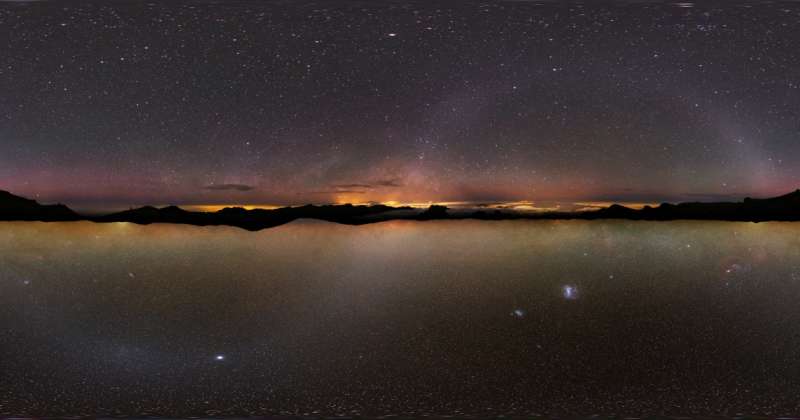
|
Explanation: A quest to find planet Earth's darkest night skies led to this intriguing panorama. In projection, the mosaic view sandwiches the horizons visible in all-sky images taken from the northern hemisphere's Canary Island of La Palma (top) and the south's high Atacama Desert between the two hemispheres of the Milky Way Galaxy. The photographers' choice of locations offered locally dark skies enjoyed by La Palma's Roque de los Muchachos Observatory and Paranal Observatory in Chile. But it also allowed the directions to the Milky Way's north and south galactic poles to be placed near the local zenith. That constrained the faint, diffuse glow of the plane of the Milky Way to the mountainous horizons. As a result, an even fainter S-shaped band of light, sunlight scattered by dust along the solar system's ecliptic plane, can be completely traced through both northern and southern hemisphere night skies.
|
January February March April May June July August September October November December |
| ||||||||||||||||||||||||||||||||||||||||||||||||
NASA Web Site Statements, Warnings, and Disclaimers
NASA Official: Jay Norris. Specific rights apply.
A service of: LHEA at NASA / GSFC
& Michigan Tech. U.
Based on Astronomy Picture
Of the Day
Publications with keywords: night sky - Milky Way - zodiacal light
Publications with words: night sky - Milky Way - zodiacal light
See also:
- APOD: 2025 July 2 Á Milky Way Through Otago Spires
- APOD: 2025 July 1 Á Eye Sky a Dragon
- APOD: 2025 May 20 Á Milky Way over Maunakea
- APOD: 2025 May 13 Á Gaia Reconstructs a Top View of our Galaxy
- APOD: 2025 May 12 Á Gaia Reconstructs a Side View of our Galaxy
- APOD: 2025 April 23 Á An Almost Everything Sky
- Galaxies in Space
